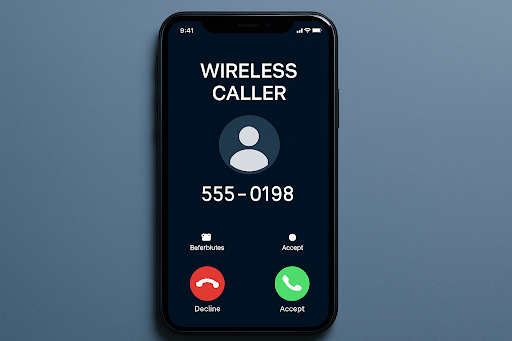
The achievement of this technology today is such that it has evolved around smart homes that offer convenience, efficiency, and connectivity. With every passing day, there is an increase in the number of devices getting connected and a growing need to secure these devices more than ever before. Smart thermostats and locks, voice assistants, and cameras should be the focus of your concern regarding these devices. Some tips on smart home security are of utmost importance.
Smart Home Security offers real-time monitoring, remote access, and instant alerts to protect your home using smart cameras, sensors, and automation from anywhere, anytime.
Use Strong, Unique Passwords for Every Device
Develop an Extremely Strong and Complicated Password for Each Device. Though the primary means of any device from enhanced security against multiple attacks is creating a strong password, do not use the original passwords but instead create one-of-a-kind complex combinations using uppercase and lowercase letters, numbers, and symbols rather than using easily guessable default passwords such as “123456”, “admin”, or “password”.
A password manager will help in easily tracking which password belongs to which device.
Activate 2FA even for devices that have proper security implementations. This entails an added verification step in granting access to a user, which gives hackers an extremely difficult time when trying to break into unauthorized accounts.
Secure Your Wi-Fi Network
Wi-Fi networks are the very backbone of smart-home operations, and if compromised, it’ll give the hacker access to every device on that particular network. Change the default password of your router, as this is often easy for attackers to guess.
Your Wi-Fi must use WPA3, the newest, most secure encryption standard. If this is not an option, WPA2 is permissible, yet inferior. Because many smart devices use less restrictive security protocols, you may also want to set up a separate guest network for these devices. This way, they are isolated from your personal devices like your laptop and phone for extra protection.
Keep Your Devices Updated
Your devices need regular updating to avoid growing vulnerabilities. Smart home devices are the most popular targets for hackers since most delay the installation of software updates. Set devices on automatic update of security patches so they will receive the latest updates on their own. For those devices that do not have an option to auto-update, check manually for updates regularly.
Obsolete software provides an entry point into the computing system for cybercriminals; hence, keeping devices on up-to-date firmware is one simple yet very efficient means of keeping them secured.
Limit Device Access
The more people you allow access to your devices, the greater the risk becomes. Limit access to your smart home system to trusted people who are able to control or view devices. In addition, revoke the permissions granted to anyone who no longer requires access.
Most smart devices support features like remote access or voice commands. Disabling unused options would minimize the attack entry points.
Use a VPN for Remote Access
A good idea is to use a VPN when accessing your smart home system remotely from outside. VPNs by default, encrypt all internet traffic and are normally not visible to hackers when using unsecured public Wi-Fi networks.
So, even if your connection is intercepted, the data is unreadable and secure.
Monitor Device Activity
Watch your devices. Suspicious behavior may be detected at an early stage. Many smart devices, like cameras and doorbells, come equipped with activity logs or notification alerts when something unusual happens. Check logs often to stay abreast of any security risks.
Set up alerts for important activities, like motion detection on cameras or when someone tries to unlock your smart door. If detected early, it could stave off larger ramifications of the breach.
Disable Unnecessary Features
Your TV may have Bluetooth capability that you never switch on. Other optional features you may never use can sometimes pose security threats to your smart device. With anything that could potentially expose your devices to cyber threats? Just disable any features you are not using.
Fewer features that are active on your devices translate to fewer vulnerabilities for hackers to exploit.
Secure Your Smart Hub
The smart hub serves as the primary control unit of your smart home system, where communication between devices occurs. Hence, it’s only ideal that the hub must also be one of the most securely protected devices. Start immediately by changing the hub’s default login credentials, as default usernames and passwords are easy to guess.
If your hub supports it, enable encryption for communications between the hub and other connected devices. This ensures that any data transferred across your smart home network is protected from interception.
Secure Your Voice Assistants
Voice assistants are growing increasingly omnipresent in smart homes as they are in devices, but they come with all kinds of risks. These continuous looking, always listening-for-commands devices could easily become partners to the intruder.
A protection measure is muting the microphone when a voice helper is not in use, especially in very sensitive areas. Reviewing the recorded voice data in the cloud from time to time and discarding everything that is not needed is also a good practice. Some voice assistants may even let you disable certain commands or limit how they can do those commands.
Install Antivirus Software
Antivirus software is not only for computers; integrate it into smartphones and tablets to safeguard the devices from all the malware that could threaten smart homes. Although smart devices come with security features, having another layer of defence from malware on the mobile device gives additional security to smart home systems.
An excellent antivirus program will also help in detecting phishing attacks or malicious apps that can compromise the home network.
Consider Physical Security
Digital security is very important, but so is physical security in the armoring of your smart devices. Cameras and smart locks must be installed securely and tamper-proofed. Use anti-tamper screws and other fastening hardware in such a way that thieves cannot disable or steal the appliances.
Educate Family Members and Guests
It’s essential to educate the whole household about security best practices. Be clear with everyone about the importance of using strong passwords, recognizing phishing attempts, and being careful when it comes to connecting their devices to the household Wi-Fi network.
You might also want to consider, if you have guests who would want to use your network, giving them limited access through a separate guest Wi-Fi to have your smart devices isolated from their devices.
FAQs
Why is securing the smart home important?
Securing the smart home is important to protect everything together with the devices, personal information, and privacy. Connected devices such as cameras, smart locks, or smart thermostats are vulnerable to hacking if not secured properly. An incident may lead to unauthorized access to your home, theft of personal information, or something worse.
What should I do if my smart home device is hacked?
The devices should be disconnected from the internet immediately after one suspects that the device has been hacked so that access is not granted any further. Any associated passwords such as Wi-Fi password and passwords of the affected device should then be changed, making sure to turn on two-factor authentication (if offered). In some cases, a factory reset of the device should be considered, along with upgrades of its firmware to fix security holes.
Is it safe to use voice assistants like Alexa and Google Assistant in my home?
Proof of this is that they are generally safe when used in the proper manner. They listen all the time, which creates room for being hacked by attackers. To improve security, mute the microphone during times when the voice assistant isn’t being used and periodically check and delete saved voice recordings. Be careful when giving voice commands to reveal sensitive information, like a password or banking details.


